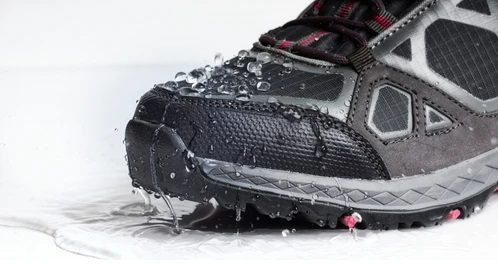
Waterproofing boots is a common and burning question among working professionals. It’s no secret how much time you spend in your work boots. And how important it is to keep them in the best condition possible.
The problem with most of us, we don’t have enough time or resources to take care of our leather boots and other work boots as we should, so how can you make your work boots waterproof at home? That’s what this article is all about!
When to Make Work Boots Waterproof
The best time for you to make work boots waterproof is when they need them most. Waterproofing them before the first time that they are exposed to moisture will help prevent soaking through and make your life a lot easier down the line.
This is how you know when to waterproof work shoes: If the boots are starting to get damp from exposure, that’s a sign they need some TLC. Of course, this goes without saying for leather and suede footwear—require regular waterproofing treatments at least once every season because of how absorbent these materials are. But other types of fabrics will benefit as well! Wool and cotton garments can stay dry longer than synthetics, but eventually, moisture will soak through the fabric over time.
A good rule of thumb is to give your work boots an annual treatment to keep them in tip-top shape. This should involve brushing any dirt off with a stiff brush before applying wax polish (or spray) on your work boots.
To make work boots waterproof for longer periods, you should give them a good conditioning and polishing treatment every few months. This will help renew the level of protection and extend your footwear’s life expectancy by up to two years!
Types of Waterproofing Compounds
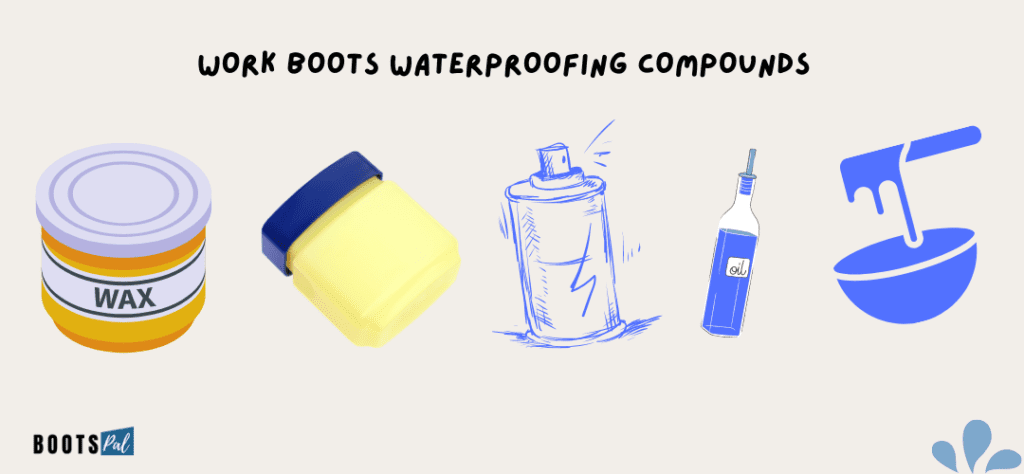
Don’t you hate when it rains and your shoes get wet?
Like the different types of boot oil or conditioning oils, you could try one of these below-mentioned waterproofing compounds, especially for waterproofing. There are many contradictions regarding which works as the best waterproofing compound. An overwhelming range of products might distract you, but before you go ahead and buy one without understanding them all, please read this blog post to make a wise decision. Let’s understand the various options:
- Wax-Based Materials: The best thing about wax-based polishes is that they offer a layer of protection between your boots and the environment. Wax will moisturize, polish, and protect from dirt and water spots! Applying it every few wears ensures you get to enjoy those clean boot life days for as long as possible. Keep in mind though: never use any shiner or shoe nourishing cream if applying wax because this would cause an undesirable waxy build up preventing these products from reaching the leather surface underneath (which can be frustrating!).
- Spray Solutions: I love shoes with the perfect color. That’s why I never use sprayed solutions because they can change your leather to a slightly different tone and you might not like it. Spray compounds are effective, but if you want to check first, spray them on the back of the shoe so that way when its dry all day or overnight (depending how long), then go ahead and apply it to your whole shoe!
- Other Special Chemical Waterproofing Compounds: Waxing season is over and your shoes are looking a little dull. Maybe you’re like me, thinking that nothing could be worse than the wet weather we’ve been having all year? Enter Special Waterproof Compounds! This special chemical-based formula is designed to act as effectively as wax-based polish but sticks for longer than the wax – without any of those pesky water droplets spoiling its effect on boots. The only downside: no shiny layer added by this method so I need to use some nourishing pastes afterward in order to bring life back into my boots’ leathers from their lackluster appearance after a long winter period.
DIY Methods To Make Work Boots Waterproof

There are different methods you can use to waterproof your work boots. It all depends on how much time you have and how committed you are to the task at hand. One of the most important things is that whatever product or technique you opt for, it should be safe for both humans and animals as well as biodegradable in a natural environment – so choose what’s best!
Start by removing the laces from the boot entirely and putting them aside in one place where they won’t be lost while working on the boot itself. Next, lay on some newspaper or other protective material.
Method One: Wax and Dressing (Easy DIY)
Preparation
You will need two pots or pans for this technique – one for the wax layer and another for the dressing, which should be left on while your footwear dries entirely before wearing them in wet conditions. You will also require some clothes (a few old T-shirts work well) plus cotton balls. Steps below:
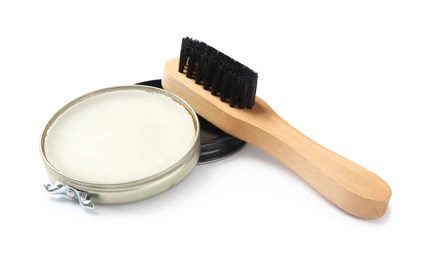
Step : 1
Prepare by brushing off excess dirt or debris, then wiping down carefully with lukewarm water using your fingers and a cloth to clean out any stubborn dirt or debris.
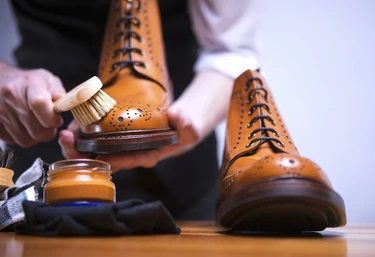
Step : 2
In an empty pan or pot, melt around 100g of beeswax over low heat, making sure that it doesn’t burn; stir until melted, then remove from heat.
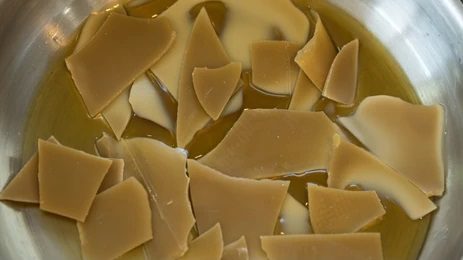
Step : 3
Add 30ml of linseed oil into the mixture as well as turpentine if you have any handy. Stir thoroughly with a metal spoon.

Step : 4
Take the second pot and place a thick layer of cotton wool on the bottom. Then take an old t-shirt, dip it in boiling water, and wring out any excess liquid before laying it on the cotton wool to soak up more moisture.

Step : 5
Alternatively, apply the wax using your fingertips and rub it in thoroughly until you’ve covered all of the inside surfaces that will be exposed when wearing them: soles, seams, tongue, exterior leather parts like around zippers and buckles – even areas such as how the laces tie onto eyelets. Use a cotton swab to get into tight corners where fingers might not fit easily if necessary for tough spots. You could also try an old toothbrush if you don’t have anything else on hand but make sure it is no longer used for brushing teeth!
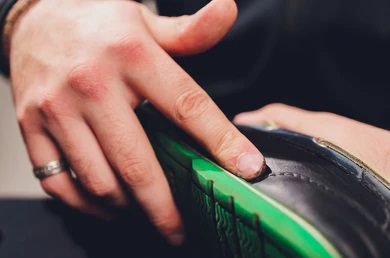
Step : 6
Place your boots on one side, then pour over half a kettle of boiled water onto both pots or pans. Leave for around five minutes as this will start to soften them.

Step : 7
Place a clean rag into the mixture with some turpentine (if you have it) using very light strokes across each boot’s leather surface until it appears glossy.
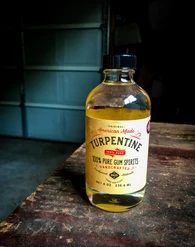
Step : 8
Let dry for about 15 minutes, by which time they should be completely waterproof – do not wear these shoes outside until they’re completely dry.
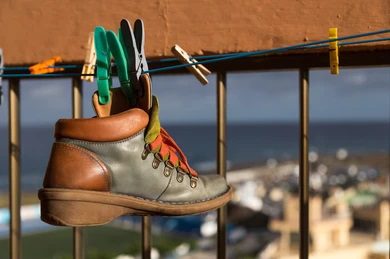
You can sneak peek into this easy homemade DIY video by The Outsider to get more clear idea about making work boots waterproof by waxing.
Method Two: Seam Sealant
Seam sealant is often recommended for new boots or boots that have been re-soled. This is a tried and tested way to make work boots waterproof when new, which can be bought from most supermarkets or hardware stores.
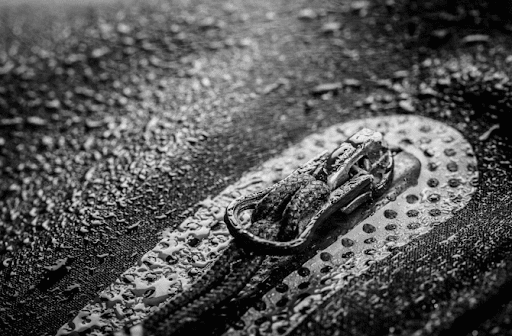
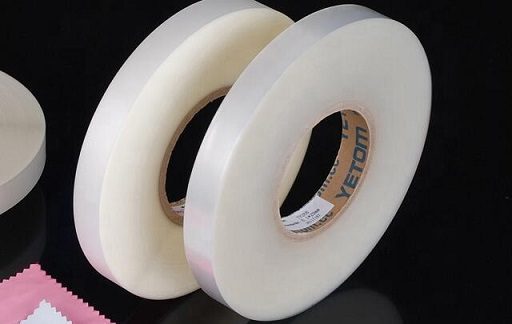
This usually comes in two sticky strips that you peel off their backing and apply on either side of the boot’s seams before attaching them. It would be best if you made sure there are no folds or wrinkles as this will allow water through easily. A good starting point for how long they should last would be about six months, so if yours seem to have gone off quicker, try using another type instead.
Method Three: Silicone Boot Waterproofing Spray
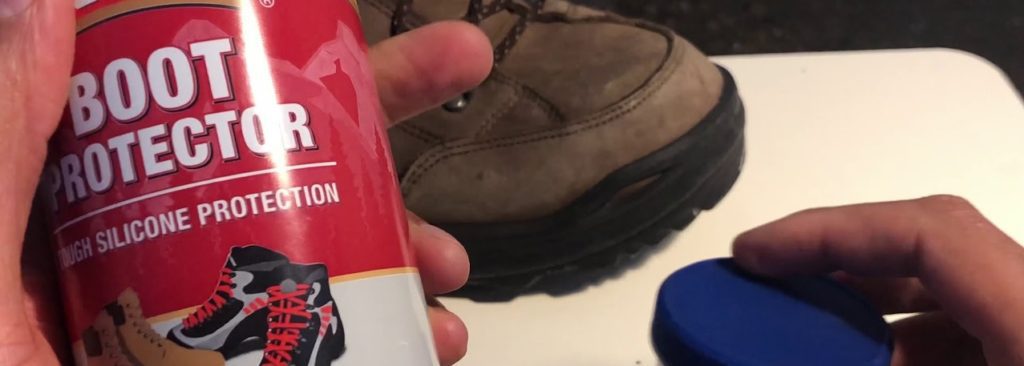
Use a silicone spray to make work boots waterproof. This is easy and effective but will not last as long as any of the methods mentioned above, so you may need to reapply or refresh it more often for it to be fully functional once again. Also, it’s best to give them time after spraying before wearing them because this allows the solvent some time to evaporate, which can cause an unpleasant smell if worn too soon. You should also avoid over-spraying – just one quick application around the seams is enough, then let dry thoroughly before using.
Method Four: Desperate DIY Method
If you don’t have the ingredients mentioned above or feel uncomfortable, you can also use Transmission oil, Clearcoat enamel spray, Non-stick cooking spray, Vaseline, or any thick cream.
- Transmission Oil: Use a rag to apply it generously onto the leather. Buff with another clean cloth until all excess is gone. This method has been used for decades and can work wonders but may have a strong smell that some people find unpleasant, or the feet of someone who wears boots that are not waterproofed regularly, and will stink after just one day outside! Avoid applying this if at all possible for these reasons.
- Clearcoat Enamel Spray: Apply it in layers, drying thoroughly between each application, so it completely dries before you add more on top of what’s already starting to dry out again. It should take about three coats to get your desired level of protection from water and bumps due to how thin this substance becomes when it’s drying.
- Non-stick Cooking Spray: this is a popular choice for making work boots waterproof because of how easy it is to apply and how long the effects last. Just give your boots or shoes an even coating as you would with any cooking pan, then let them dry fully before wearing them outside, so they don’t get slippery on wet surfaces.
- Vaseline Cream: this is a good option when you have boots that are already water-resistant to begin with. It will give them an additional layer of protection without bothering how they feel or how well they function in their day-to-day lives, and it’s also easy to apply because it doesn’t require any drying time before wearing as long as the surface area has been given enough coverage.
You need to keep in mind that irrespective of methods applied, you can’t make your pair of work books waterproof forever, unless you repeat the waterproofing process after certain period of time. The duration varies based on the the intensity of use and method of waterproofing used. Also you need to assess the condition of your boots as different professionals are engaged in different professional works effecting boots varyingly.
Frequently Asked Questions
Is Vaseline or mink oil good for waterproofing boots?
Vaseline is suitable for short-duration waterproofing leather work boots. Applying Vaseline in and around the stitches of the boots can prevent water from entering your boots, but definitely a temporary and short-duration measure.
As we speak about the effectiveness of mink oil, it is also not suggested to make work boots waterproof for a longer duration and better leather health. The best use of Mink oil is to revive the natural oils of your leather boots which normally becomes dryer with time. At the same time, mink oil is perfect for waterproofing your work boots but for a shorter duration.
How long do waterproofing boots by Spray last?
If you decide to use water-repellant sprays, on average most of them currently on the market will last from one to three months. It also depends on the frequency and intensity of your use of the boots – more frequent and intense use will reduce the effective duration of waterproofing work boots by spray.
Can I waterproof synthetic boots?
Yes, you can make work boots waterproof which are made of synthetic material by following any of the above-mentioned methods.
Can I Use WD40 to make work boots waterproof?
No, you should not. WD-40 softens the hard and stiff leather. So leather work boots can be benefitted from this treatment. But unfortunately, there is no record or info about WD40 to make work boots waterproof.
Does saddle soap waterproof boots?
Saddle soap contains few effective ingredients that provoke and helps protect leather, as such it is considered a helpful mean to make work boots waterproof. Saddle soap is basically used to clean and soften horse saddles from an early age.
Does Dubbin waterproof leather?
Dubbin is sometimes used to make work boots waterproof. As per Wikipedia – Dubbin is a wax product used to soften, condition, and waterproof leather and other materials. It consists of natural wax, oil, and tallow.
Dubbin has been used since medieval times to waterproof and soften leather boots. It is different from shoe polish, which is used to impart shine and color to leather. However, we should never use it on suede or nubuck leather as the oily dubbing wax can damage them.
Parting Words
Be sure not to forget how important foot care is. So making work boots waterproof is one of the first steps. If you’re still not sold on how important this step can be, think about how much time and energy goes into caring for your feet in a day – what if they were wet? It would take so long to dry them off after walking around all day that it’s just easier to keep them from getting damp at all!
So making your boots waterproof will save you some trouble later on down the line. Also, don’t forget to make sure they have plenty of room inside by stretching out each boot before wearing it – an uncomfortable fit may lead to blisters or other foot issues over time.
I hope this article will help you find the best waterproofing method for your work boots. Feel free to drop a quick comment below about how we are doing.